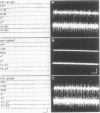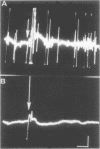Abstract
Electrophysiological studies of a patient with cephalic tetanus, manifested by trismus and unilateral facial palsy, revealed that the trismus resulted from strictly unilateral masseter spasm which stopped during sleep, a normal silent period in the involved masseter muscles, initially prolonged distal latency of the paretic orbicularis muscles, and abnormal continuous muscle activity in the paretic facial muscles which stopped during sleep and after facial nerve block. We conclulde that the facial paralysis was probably secondary to peripheral nerve dysfunction and the continuous muscle potentials represented enhanced activity of the nucleus. An intensity spectrum of the inhibitory defect in tetanus is postulated.
Full text
PDF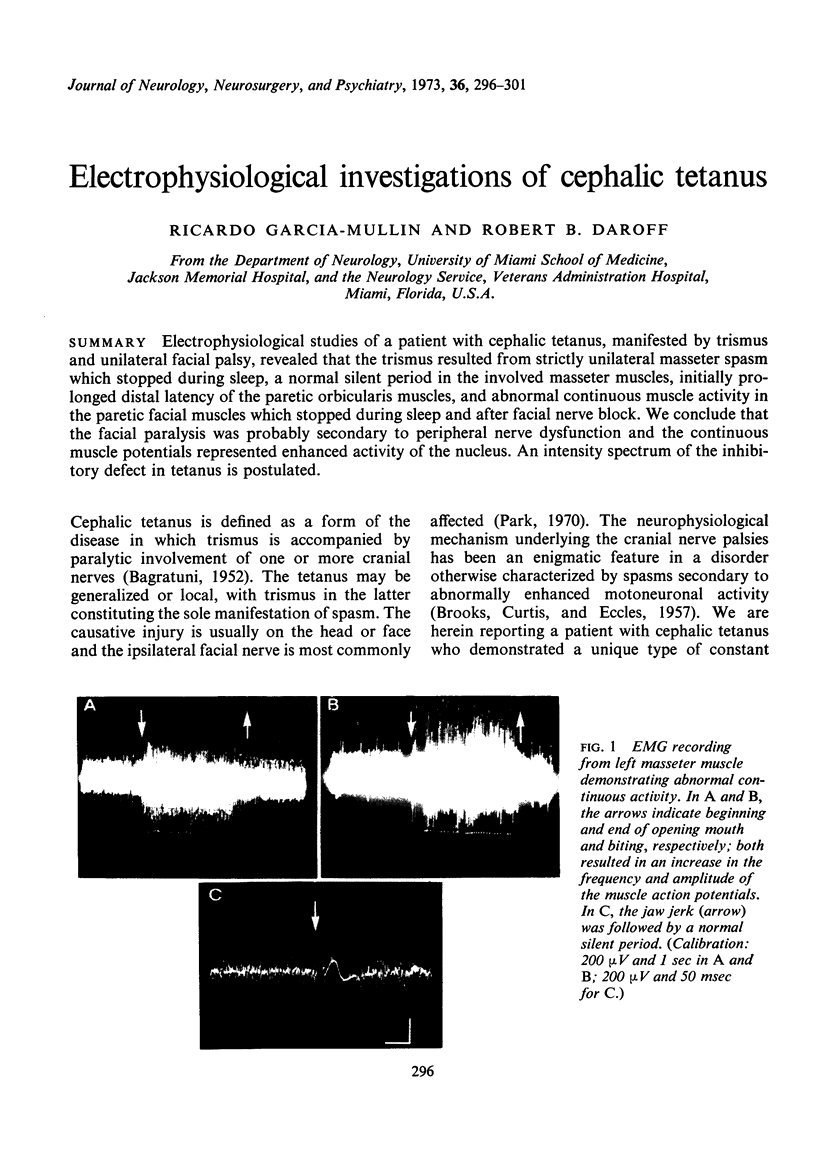
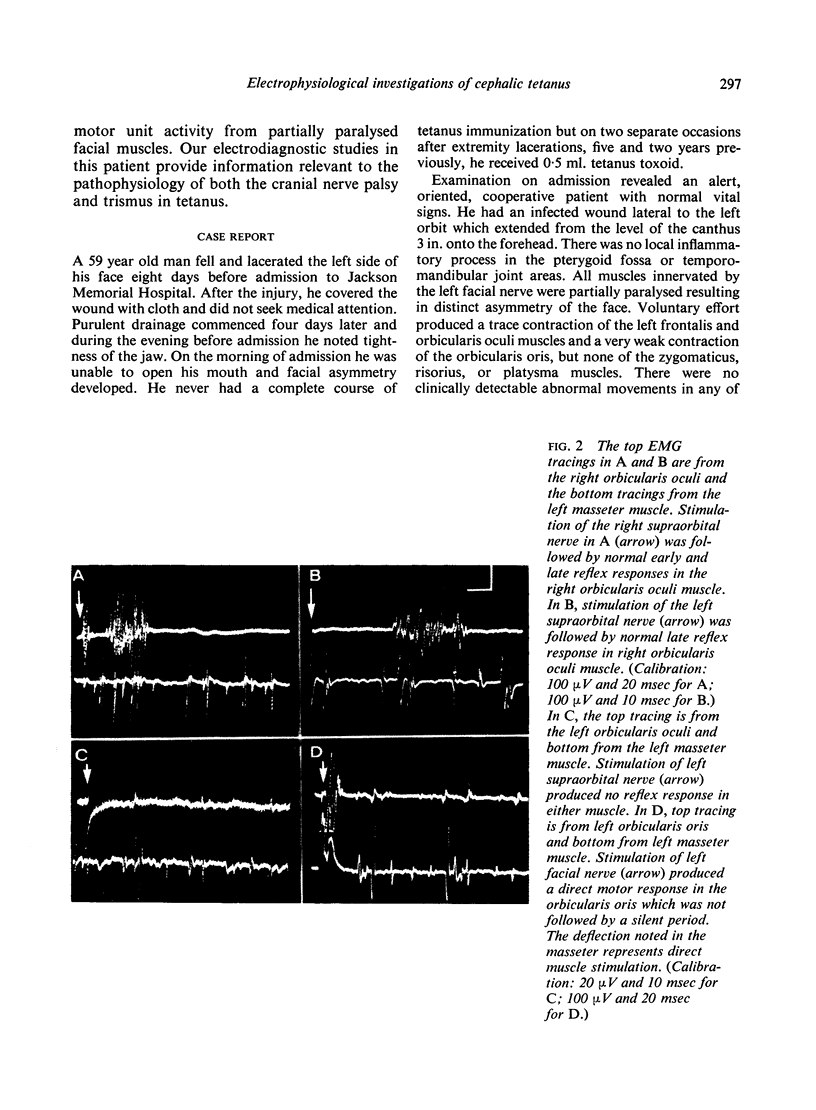
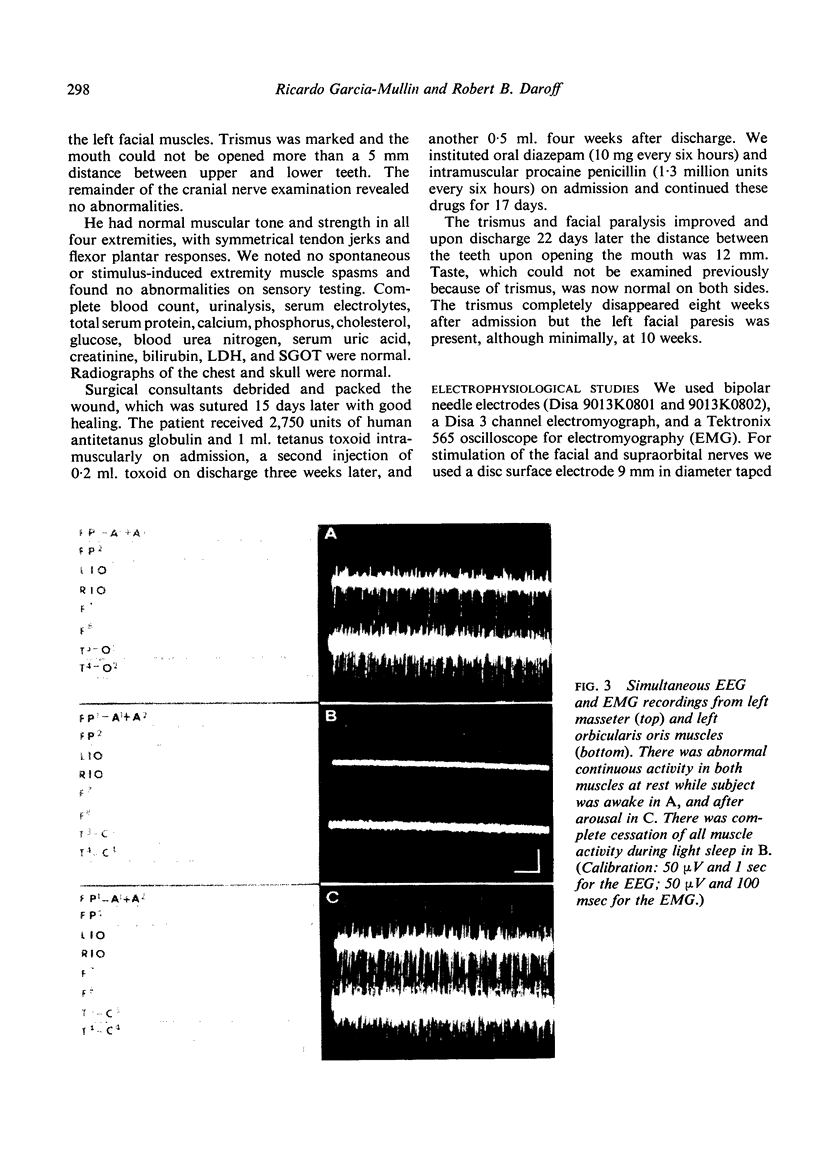
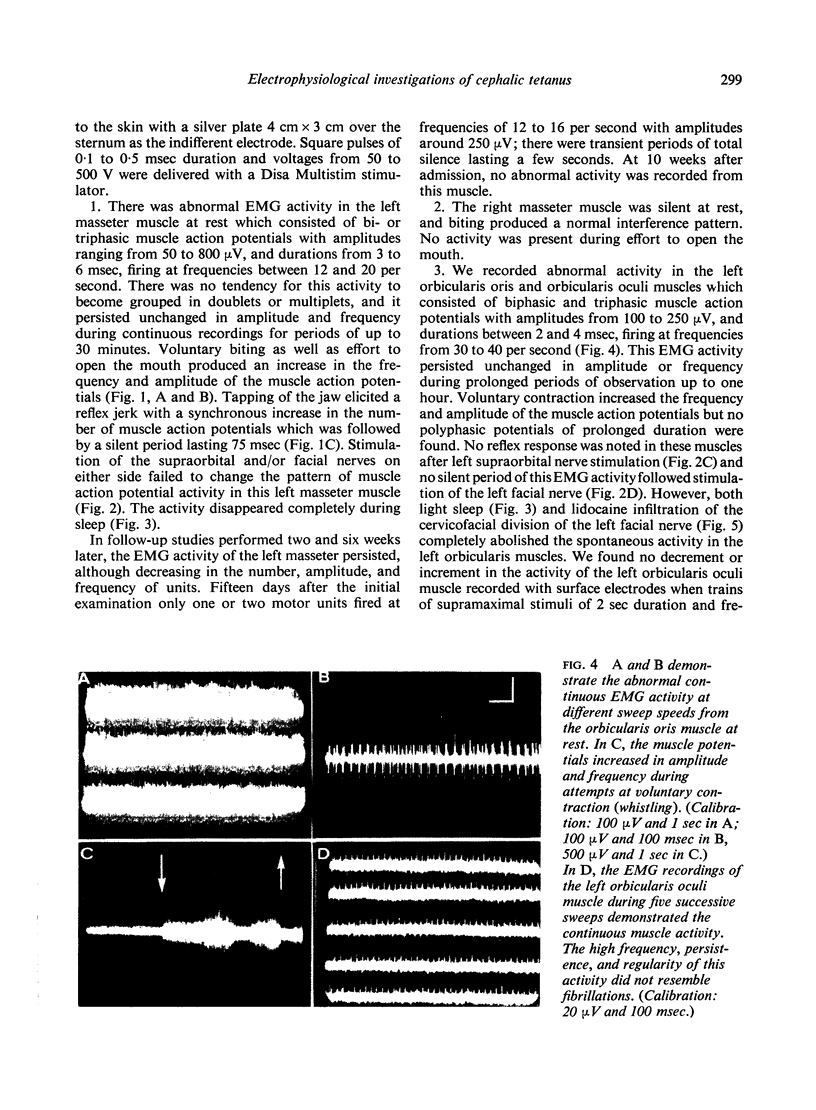
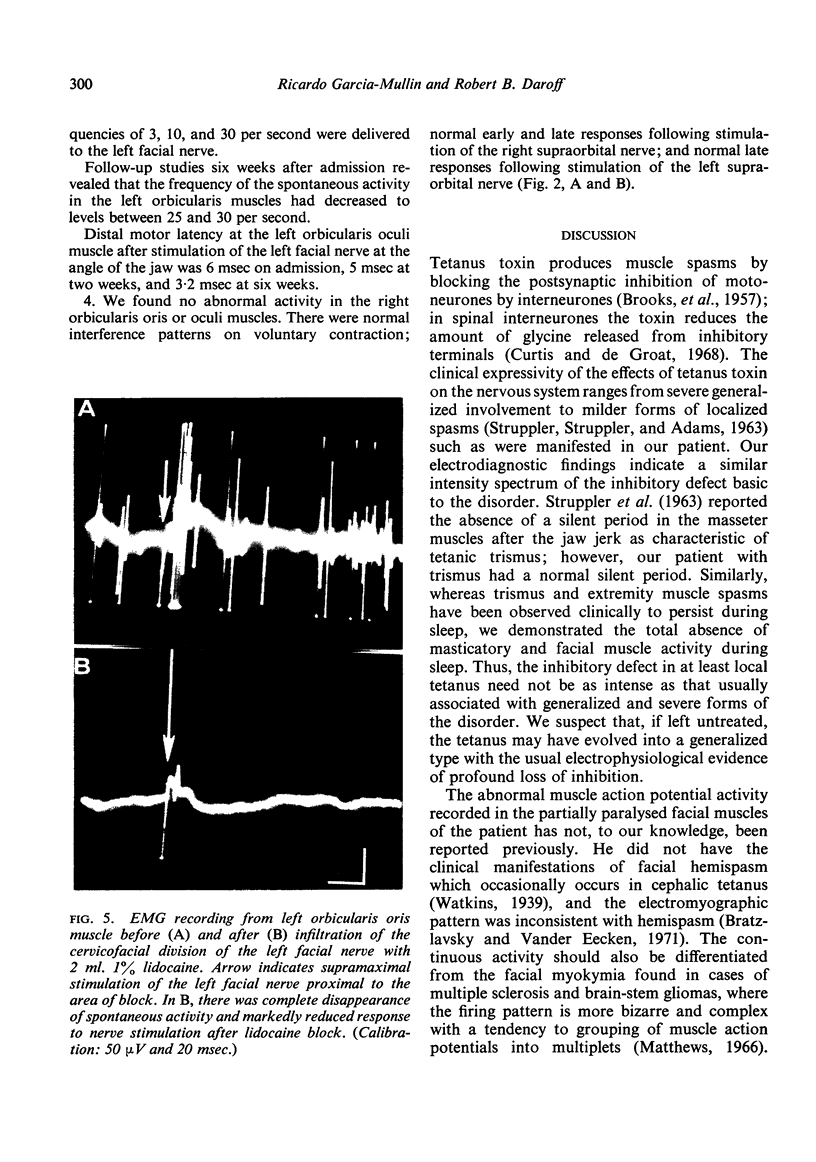
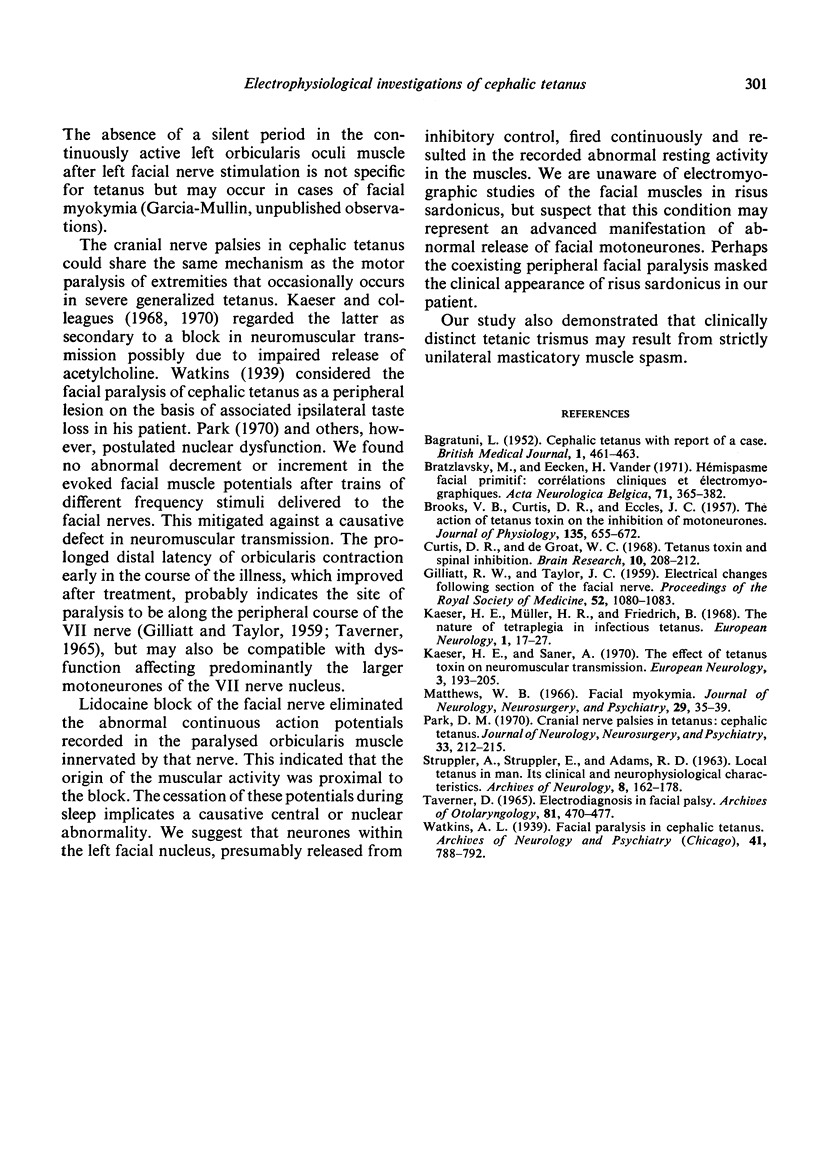
Images in this article
Selected References
These references are in PubMed. This may not be the complete list of references from this article.
- BAGRATUNI L. Cephalic tetanus, with report of a case. Br Med J. 1952 Mar 1;1(4756):461–463. doi: 10.1136/bmj.1.4756.461. [DOI] [PMC free article] [PubMed] [Google Scholar]
- BROOKS V. B., CURTIS D. R., ECCLES J. C. The action of tetanus toxin on the inhibition of motoneurones. J Physiol. 1957 Mar 11;135(3):655–672. doi: 10.1113/jphysiol.1957.sp005737. [DOI] [PMC free article] [PubMed] [Google Scholar]
- Bratzlavsky M., Vander Eecken H. Hémispasme facial primitif: corrélations cliniques et électromyographiques. Acta Neurol Belg. 1971 Sep-Oct;71(5):365–382. [PubMed] [Google Scholar]
- Curtis D. R., De Groat W. C. Tetanus toxin and spinal inhibition. Brain Res. 1968 Aug 26;10(2):208–212. doi: 10.1016/0006-8993(68)90123-6. [DOI] [PubMed] [Google Scholar]
- GILLIATT R. W., TAYLOR J. C. Electrical changes following section of the facial nerve. Proc R Soc Med. 1959 Dec;52:1080–1083. [PubMed] [Google Scholar]
- Kaeser H. E., Müller H. R., Friedrich B. The nature of tetraplegia in infectious tetanus. Eur Neurol. 1968;1(1):17–27. doi: 10.1159/000113606. [DOI] [PubMed] [Google Scholar]
- Kaeser H. E., Saner A. The effect of tetanus toxin on neuromuscular transmission. Eur Neurol. 1970;3(4):193–205. doi: 10.1159/000113971. [DOI] [PubMed] [Google Scholar]
- Matthews W. B. Facial myokymia. J Neurol Neurosurg Psychiatry. 1966 Feb;29(1):35–39. doi: 10.1136/jnnp.29.1.35. [DOI] [PMC free article] [PubMed] [Google Scholar]
- STRUPPLER A., STRUPPLER E., ADAMS R. D. Local tetanus in man. Its clinical and neurophysiological characteristics. Arch Neurol. 1963 Feb;8:162–178. doi: 10.1001/archneur.1963.00460020062005. [DOI] [PubMed] [Google Scholar]
- TAVERNER D. ELECTRODIAGNOSIS IN FACIAL PALSY. Arch Otolaryngol. 1965 May;81:470–477. doi: 10.1001/archotol.1965.00750050483006. [DOI] [PubMed] [Google Scholar]





